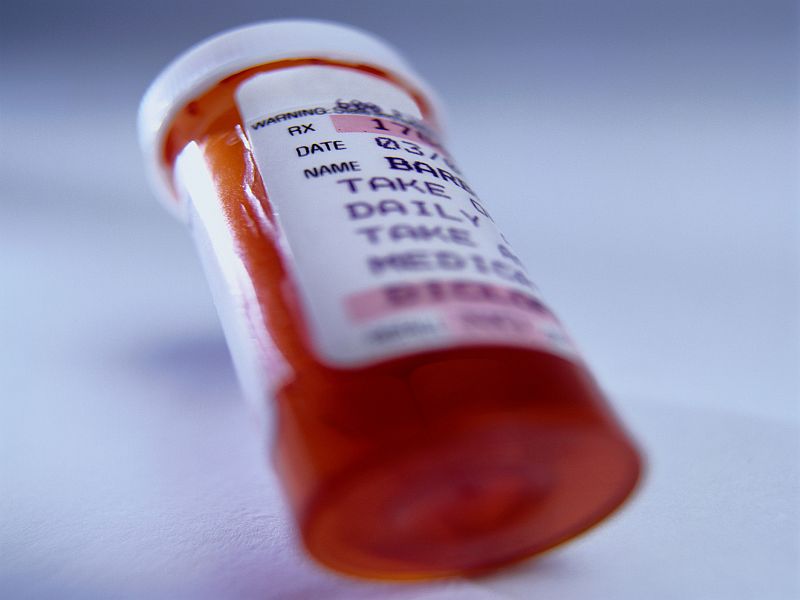Epilepsy DrugTied to Higher Risk of Suicidal Behavior in Young Users

THURSDAY, June 13, 2019 (HealthDay News) -- A new study supports the notion that a drug used to control epilepsy and other disorders could make some young people more prone to suicide.
The medicine, pregabalin (Lyrica), comes from a class of drugs called gabapentinoids. Besides their use against epilepsy, these drugs are also used to treat nerve pain and anxiety disorders, as well as symptoms of Parkinson's disease. But according to British researchers, pregabalin has also been linked to a heightened risk for suicidal behavior, overdoses, injuries and car crashes.
People aged 15 to 24 appeared to be at highest risk, the researchers found.
Gabapentinoids are in frequent use: Use of the drugs has climbed steadily, and they're among the top 15 money-making medications around the world, noted researchers led by Seena Fazel. He's a psychiatrist at the University of Oxford.
One U.S. physician familiar with the drugs said the new findings bring a needed note of caution.
The study "brings to attention that all medications carry risk," said Dr. Melissa Bernbaum, who directs epilepsy care at Northwell Health's Huntington Hospital in Huntington, N.Y. "When prescribing a medication, physicians must carefully weigh the risks and benefits."
Gabapentinoids "are not used specifically for Parkinson's disease," she noted, "but may be used to treat symptoms and conditions that are often present in patients with Parkinson's disease, such as restless legs syndrome."
In the new study, Fazel's team used prescription, patient, death and crime registers to identify nearly 192,000 people, aged 15 and older, given gabapentinoids -- either pregabalin (Lyrica) or gabapentin -- between 2006 and 2013.
The investigators found that compared to people not using the drugs, those taking one form of gabapentinoid only -- pregabalin -- had a 26% higher risk of suicidal behavior or death from suicide, a 24% increased risk of overdose, a 22% increased risk of head or body injuries, and a 13% increased risk of road crashes or traffic offenses.
The researchers couldn't rule out that the heightened risk among 15- to 24-year-olds wasn't largely due to increased impulsivity observed in the age group, or young people's higher odds of using alcohol or illegal drugs along with a gabapentinoid.
The study's design also means that it cannot prove that the drug causes risky behaviors, only that it seems to be connected. The findings were published June 12 in the BMJ.
Gabapentinoids "remain a valued therapeutic option for many people," stressed Derek Tracy, a consultant psychiatrist at Queen Mary's Hospital in London and author of an accompanying editorial.
"Medicines can harm as well as heal, and the best treatment decisions are made in full partnership with patients, after consideration of all available evidence on both," he said in a journal news release.
For her part, Bernbaum stressed that gabapentinoids should be prescribed on a case-by-case basis, taking individual patient factors into account.
For example, she said, in the case of pregabalin, "other factors may be contributing [to suicide risk], such as substance abuse. Therefore, it is important to address the possibility of higher risk behaviors when considering use of this medication."
Dr. Derek Chong was similarly cautious. He directs epilepsy care at Lenox Hill Hospital in New York City.
"This is an interesting study, but the headline needs to be interpreted with a lot of caution," Chong said. "When reviewing details, it becomes more clear that gabapentin and pregabalin were actually protective in patients who were diagnosed with epilepsy, psychiatric and musculoskeletal conditions, whereas almost all of the risks were in the patients without these conditions."
So, Chong added, "the main point of the study is that medications we used to think of as being very safe for use in pain may still have some risks, and we may have to rethink their use, particularly pregabalin, when using in the younger populations."
More information
For more on pregabalin, visit the U.S. National Library of Medicine.

The news stories provided in Health News and our Health-E News Newsletter are a service of the nationally syndicated HealthDay® news and information company. Stories refer to national trends and breaking health news, and are not necessarily indicative of or always supported by our facility and providers. This information is provided for informational and educational purposes only, and is not intended to be a substitute for medical advice, diagnosis, or treatment.

